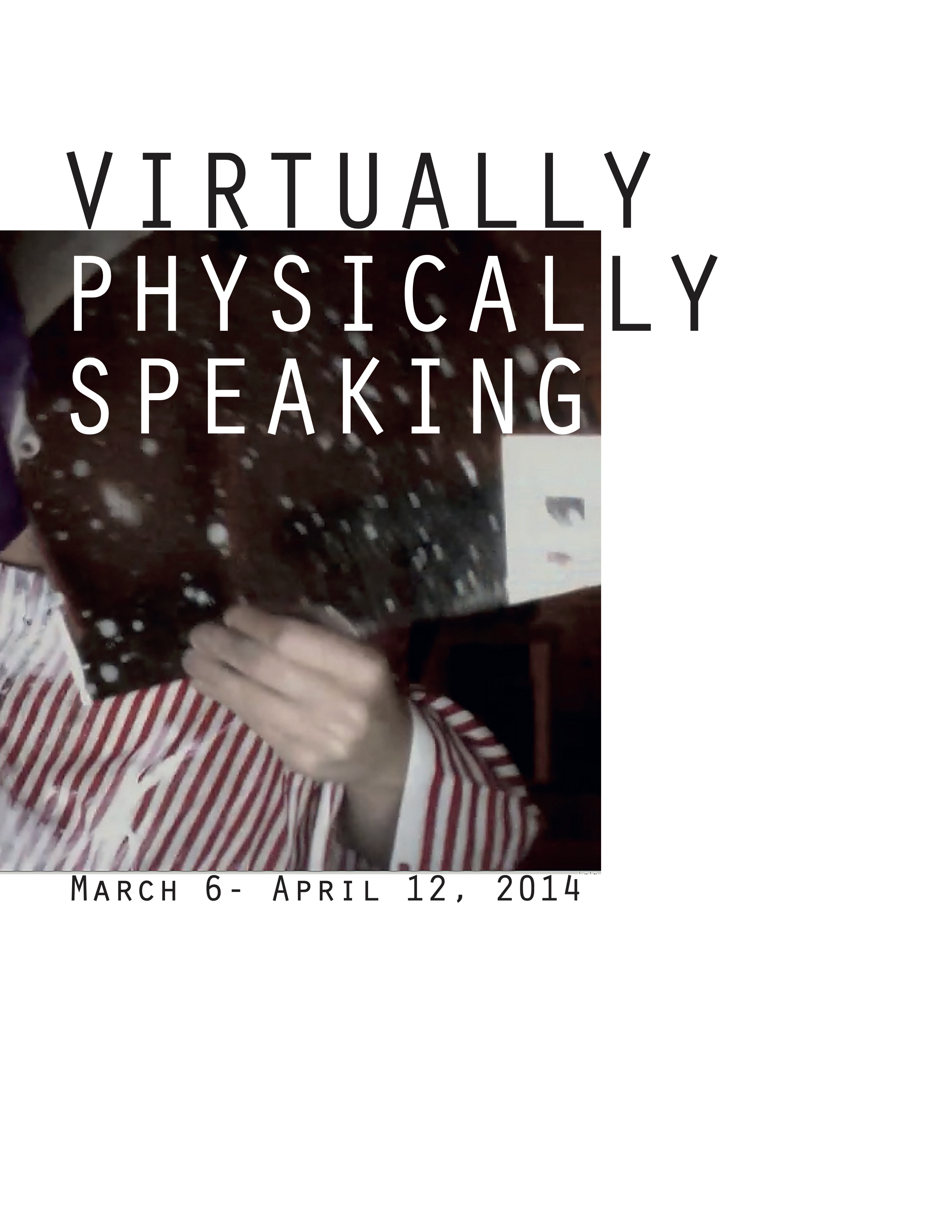Virtually Physically Speaking
How do we understand physicality today? How do we perceive of dimension, depth, and density, surface, texture, and proximity in relation to a corporeal state when our activities are generated, accessed and understood through technologies that assume or define dimensions beyond the tangible? Currently, we are participating in a world – globally and locally – that adopts the language of 3-D as adjective and verb, used to describe enhanced states, or even just pragmatic states, of things, non-things and actions alike. We are experiencing the space beyond the monitor as an ever-present palpable site/ arena/atmosphere that we visit/navigate/go-to/experience.
With the increased use and authority of 3-D imaging and location tracking, conventional notions of physicality have been simultaneously extended and compressed: we navigate as blue dots on our GPS; we hula hoop in our living rooms while “feeling” the centrifugal force of the virtual hula hoop on the monitor; we rotate articulated objects on the screen to view them from all angles without moving from our seats; we immediately view and upload pictures to share with our networks, even before we leave the premises; and our avatars are accepted as autonomous and public personas.
As new technologies have developed through the years, theorists have outlined - alarmingly or enthusiastically - the alteration in perceptions of time and space and the condition of the “post-human”. The effects of these developments are embedded in our psyches and in our bodies, in the development of our youth as well as in the progression of global culture.
How do we understand physicality today? How do we perceive of dimension, depth, and density, surface, texture, and proximity in relation to a corporeal state when our activities are generated, accessed and understood through technologies that assume or define dimensions beyond the tangible? Currently, we are participating in a world – globally and locally – that adopts the language of 3-D as adjective and verb, used to describe enhanced states, or even just pragmatic states, of things, non-things and actions alike. We are experiencing the space beyond the monitor as an ever-present palpable site/ arena/atmosphere that we visit/navigate/go-to/experience.
With the increased use and authority of 3-D imaging and location tracking, conventional notions of physicality have been simultaneously extended and compressed: we navigate as blue dots on our GPS; we hula hoop in our living rooms while “feeling” the centrifugal force of the virtual hula hoop on the monitor; we rotate articulated objects on the screen to view them from all angles without moving from our seats; we immediately view and upload pictures to share with our networks, even before we leave the premises; and our avatars are accepted as autonomous and public personas.
As new technologies have developed through the years, theorists have outlined - alarmingly or enthusiastically - the alteration in perceptions of time and space and the condition of the “post-human”. The effects of these developments are embedded in our psyches and in our bodies, in the development of our youth as well as in the progression of global culture.



 Image by Ika Knezevic
Image by Ika Knezevic